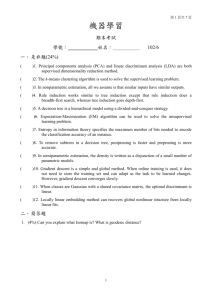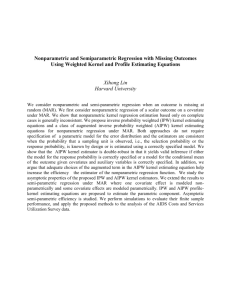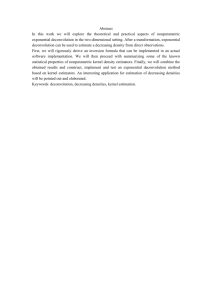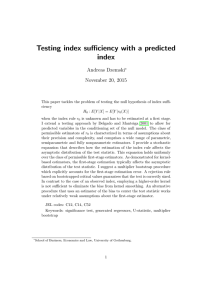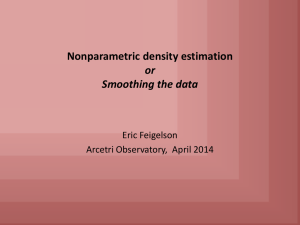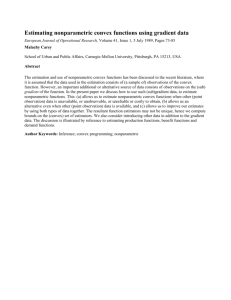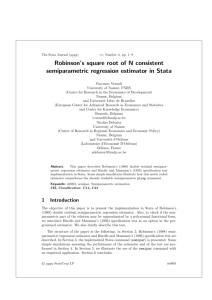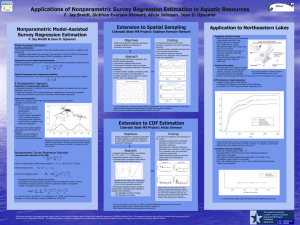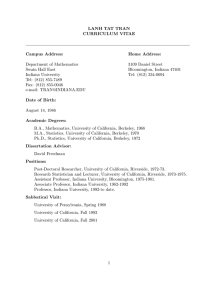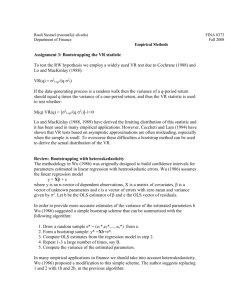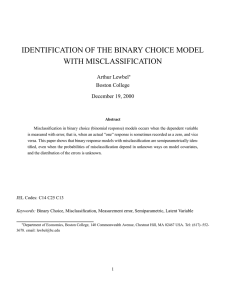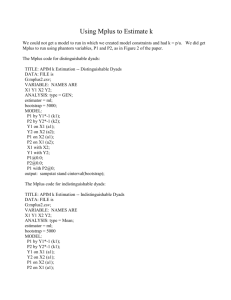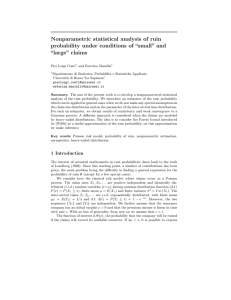COURSE SYLLABUS
advertisement
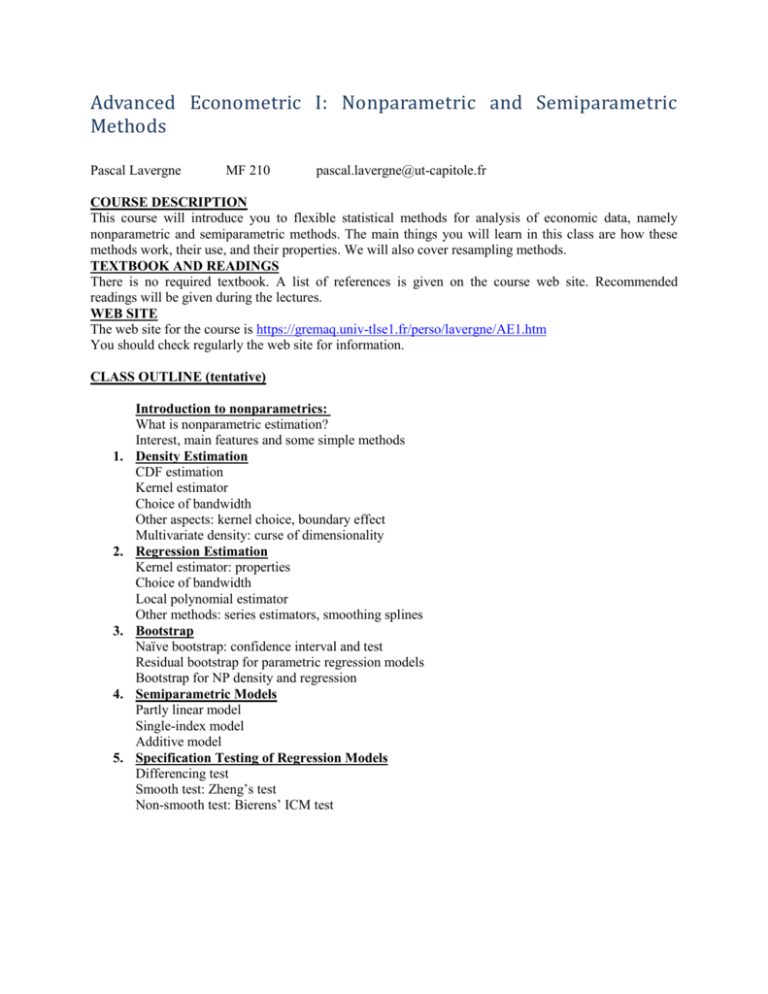
Advanced Econometric I: Nonparametric and Semiparametric Methods Pascal Lavergne MF 210 pascal.lavergne@ut-capitole.fr COURSE DESCRIPTION This course will introduce you to flexible statistical methods for analysis of economic data, namely nonparametric and semiparametric methods. The main things you will learn in this class are how these methods work, their use, and their properties. We will also cover resampling methods. TEXTBOOK AND READINGS There is no required textbook. A list of references is given on the course web site. Recommended readings will be given during the lectures. WEB SITE The web site for the course is https://gremaq.univ-tlse1.fr/perso/lavergne/AE1.htm You should check regularly the web site for information. CLASS OUTLINE (tentative) 1. 2. 3. 4. 5. Introduction to nonparametrics: What is nonparametric estimation? Interest, main features and some simple methods Density Estimation CDF estimation Kernel estimator Choice of bandwidth Other aspects: kernel choice, boundary effect Multivariate density: curse of dimensionality Regression Estimation Kernel estimator: properties Choice of bandwidth Local polynomial estimator Other methods: series estimators, smoothing splines Bootstrap Naïve bootstrap: confidence interval and test Residual bootstrap for parametric regression models Bootstrap for NP density and regression Semiparametric Models Partly linear model Single-index model Additive model Specification Testing of Regression Models Differencing test Smooth test: Zheng’s test Non-smooth test: Bierens’ ICM test 2 GRADING There will be individual assignments (40%), a presentation and a paper (60%). Paper guidelines: This part can be done in pairs. Choose a paper that is of interest to you. The paper should a recently published paper or a working paper. (I will also provide you with a short list of papers in case you don’t find one on your own). It could be an empirical paper using cutting-edge semi/nonparametric techniques, or a theoretical paper exploring a new method. Your choice is subject to my approval. Just send me an email with the paper asking for approval. 1. Read the paper carefully; try to understand the methods used and results. If necessary read a few more references to fully understand it. 2. Prepare a 20 minutes presentation for the class. Make an effort to explain the method and how it works. The presentation will be scheduled during the second half of the term. 3. From there, you should write a paper that: a. Place the paper in perspective within the literature: this will likely require reading some extra references. b. Explain the paper and the methods used (from your presentation and feedback you got) c. Do your part, that is do your own (specific/focused) investigation from the paper, e.g. i. For an empirical paper, get some new data and “replicate” the paper ii. For an empirical paper, get the original data and try slight changes in the methods to see whether results are robust iii. For an empirical/theoretical paper, do some simulations to explore the properties of the method, or to compare the performances of two different methods, … iv. For a theoretical paper, apply the method to a particular data set. The paper should be around 15-20 pages long (everything included). Keep it focused. Show that you understand the methods and that you know how to apply them. Presentation guidelines: We will begin presentations after the break. Prepare a 20 minutes presentation (try to split the time equally between the two of you if you work in pairs). Raise the interest of other students and make them understand the key points. Keep it focused. I will interrupt the presentation if it’s too long. Then we will take 5 minutes for questions (from other students and / or me). Then we will take 5 minutes for debriefing (presentation itself and the paper) SOFTWARE: I recommend that you use R, along with the np Package, for assignments and paper. Further info can be found on the course web page.

